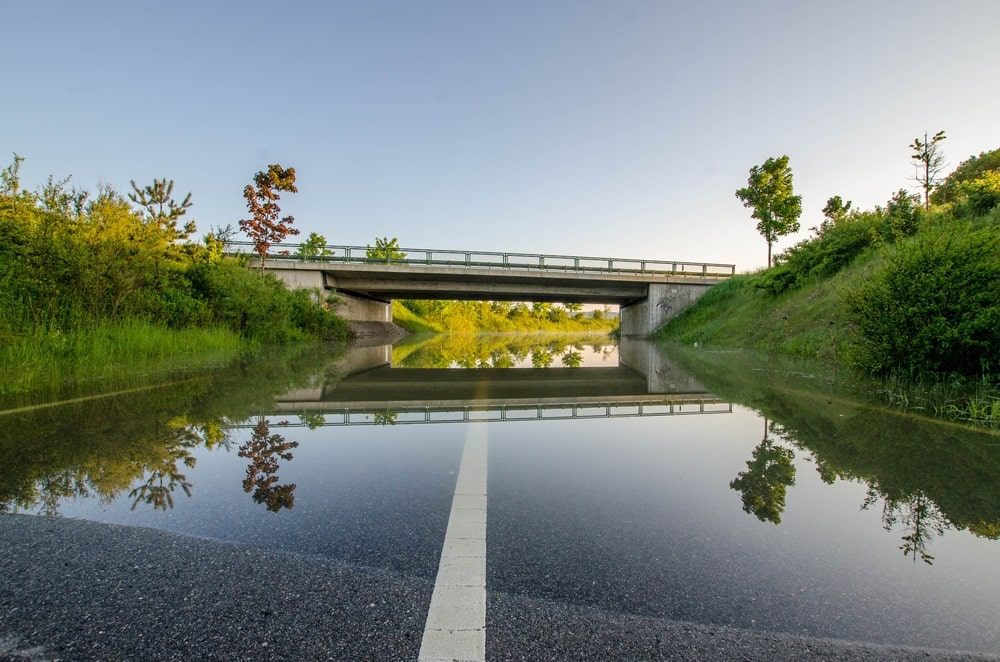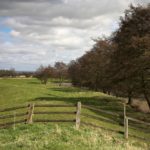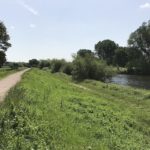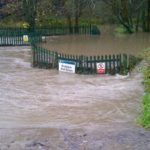News - Construction News
Extensions to flood defences built in Newark
9 Oct 19

The Environment Agency has completed the construction of a further 50m of flood defences in Newark-upon-Trent, Nottinghamshire to reduce the risk of flooding to road infrastructure and 140 properties.
These new flood defences are adding to the already existing 450m of flood walls that are in place along the River Trent, with the project also entailing the planting of 40 trees in order to mitigate the removal of 18 semi-mature trees which required moving so that construction could go forward.
In addition to the complete construction of the new segment to the flood defences in Newark, surrounding sections of the flood wall were then stripped of top soil, compacted, and then raised 0.6m above the original height before being seeded with grass.
It is hoped that the addition of the 40 trees and grass seeding will allow the flood wall to blend in with the natural environment and will eventually have the aesthetic of a natural river formation.
One crucial element to the delivery of this project was the partnership between the Environment Agency, Urban and Civic, and the local planning authority which ensured the supply of approximately 4,000 tonnes of embankment material for free, saving the project commissioners around £80,000.
Adding to this, the partnership benefitted the climate by preventing the expulsion of some 114 tonnes of carbon dioxide which would have been produced had the original suppliers of the embankment material, based in Rotherham, been employed and forced to deliver the material from further afield.
Ultimately, the extension to the Newark flood defences have reduced the likelihood of a flooding event in the town from a five per cent likelihood to a one per cent likelihood, meaning that the likelihood has gone down from a one in 20 possibility per year to a one in hundred possibility per year.
The Project Manager at the Environment Agency, Ashley Reeves stated: “We are very pleased with the outcome of this project and our relationship with the local community. They will see the benefits of a reduced flood risk that has been built into the natural environment.”
If you would like to read more articles like this then please click here.
More News
- Reforms to Building Safety Regulator to accelerate housebuilding
15 Jul 25
Delays to building new high-rise homes will be unblocked through a new package of reforms
- New £39Bn Social and Affordable Homes Programme
14 Jul 25
Hundreds of thousands of social and affordable homes, including 60% for social rent.
- UK Introduces New Trade Measures to Support Steel Sector
11 Jul 25
Steel producers across the UK will benefit from stronger trade measures from 1 July.
-
-
Latest News
- Reforms to Building Safety Regulator to accelerate housebuilding
15 Jul 25
Delays to building new high-rise homes will be unblocked through a new package of reforms
- New £39Bn Social and Affordable Homes Programme
14 Jul 25
Hundreds of thousands of social and affordable homes, including 60% for social rent.
- UK Introduces New Trade Measures to Support Steel Sector
11 Jul 25
Steel producers across the UK will benefit from stronger trade measures from 1 July.
- Clean energy future to be ‘built in Britain’
10 Jul 25
The Clean Energy Industries Sector Plan comes into force to ‘build it in Britain’.
- Thousands more to get the tools they need to start construction careers
9 Jul 25
Thousands of people are set to benefit from on-the-job training and career opportunities in the
- €500Bn German infrastructure fund could benefit British businesses
8 Jul 25
€300bn of the fund is earmarked for the modernisation of Germany’s transport infrastructure.
-
-






